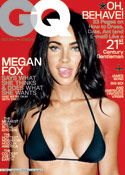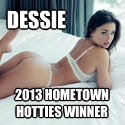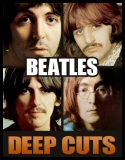Best of 2006
12/22/2006
Year End Music / Music Home / Bullz-Eye Home
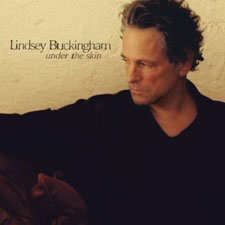 1. Lindsey Buckingham: Under the Skin (Warner Bros.)
1. Lindsey Buckingham: Under the Skin (Warner Bros.)
Skin was billed in advance as Lindsey’s “unplugged” record, and it sort of is; the album is based primarily around voice, guitar, and the odd piece of percussion. But this being a Lindsey Buckingham album, those three ingredients are stacked into infinity, spiraled up in enormous, glorious layers of sound that somehow manage to sound at once gigantic and intimate.
The result is a gorgeous, brain-bendingly intricate web of sound that’s as deep or shallow as you want it to be. Listen to Skin on headphones and get lost forever in Buckingham’s harmonic catacombs; play it back on shitty car stereo speakers and fall in love with its sadly beautiful melodies. Pore over the lyrics for hidden meaning, or just let the words wash over you. Either way, it works.
2. The Weepies: Say I Am You (Nettwerk)
If you enjoyed Everything but the Girl’s Acoustic album, or like to listen to rainy-day music under a clear blue sky, the Weepies are right up your alley. It definitely doesn’t hurt that these are generally great songs, arranged smartly enough to keep a line like “I woke up and wished that I was dead” from being laughably maudlin.
It isn’t often that music this honestly emotional comes along – and rarer still is the batch of songs that manages to completely eschew irony or distance and emerge all the better for it. Say I Am You is a little on the sweet side, perhaps, but only the most sourpussed of listeners will be able to deny its simple, addictive charms.
3. Richard Julian: Slow New York (Manhattan)
Julian is a songwriter of singular talent, capable of exposing the warmth and the dirt between the folds of humanity and making it look easy; a vocalist whose voice is both limited and absolutely appropriate for his material; and a superb multi-instrumentalist. Imagine the jaundiced eye of Randy Newman, infused with a humanist’s forgiving hand, and brought to life by Lyle Lovett’s vocals via a Manhattan coffee shop, and you’ll come close.
The buzz around this album was largely focused on the fact that members of Norah Jones’ band (including Norah herself) played on it, and four cuts were produced by her, but as usual, the buzz misses the point. What’s important is that there isn’t a single bad song, not one untrue moment, not a solitary false note.
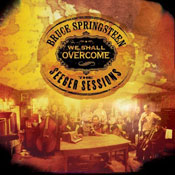 4. Bruce Springsteen: We Shall Overcome: The Seeger Sessions (Columbia)
4. Bruce Springsteen: We Shall Overcome: The Seeger Sessions (Columbia)
On the surface, Springsteen doing Pete Seeger may not sound like much to get worked up about, particularly for fans hoping for another album with the E Street Band. Albums of dusty old leftist folk songs tend to be of major interest only to musicologists and dusty old leftists, and though recasting Seeger’s classic screeds in a modern light makes a certain amount of sense, it’s tough to put together an entertaining polemic.
And yet The Seeger Sessions works – not only as homage to the titular songwriter and American hero, but as a Springsteen album. It’s a bit of a revelation, in fact. The great irony at the heart of Springsteen’s work has always been that, even as he rejoiced in the redemptive power of pure rock & roll, he was continually at war with the joyous spontaneity that is rock’s lifeblood. In a way, he’s succeeded in spite of himself; it’s difficult to think of another performer who has been able to assemble his records so meticulously without bleaching all the fun out of them.
It’s for this reason that perhaps the best thing about listening to The Seeger Sessions is hearing Springsteen finally loosen up. He assembled a huge hootenanny combo for this album, and recorded most of it in just a couple of days; since Seeger’s songs were always meant to be felt as much as listened to, the approach is a particularly perfect fit. Listeners who dismiss this record out of hand as boring, didactic folk music are missing the point, and doing themselves a disservice besides – these songs have more real, raw rock energy than anything Springsteen has recorded in years. Maybe ever. To hear him directing the band on the fly is to hear the sound of a man who has learned to stop analyzing the music’s power and simply give himself over to it.
5. Bel Auburn: Lullabies in A & C (The Demselfly)
Great, billowing clouds of guitars, intermingled with digital noise and topped off with the frostbitten vocals of lead singer Scott Williams, Lullabies is proof that even if there’s nothing new under the sun, familiarity doesn’t always breed contempt.
There isn’t a single note on the album that doesn’t sound like an echo of something you’ve already heard – younger ears might call this stuff Coldplay-esque, while more, ahem, seasoned listeners might be reminded of the best sad ‘n’ jangly moments of late ‘80s alterna-pop – and there isn’t a single thing wrong with that. In fact, it’s part of what makes this perhaps the most mournfully addictive album of the year. If you’ve never had your heart broken, you’ll hear these songs and wish you had.
6. Tommy Keene: Crashing the Ether (Eleven Thirty)
For a couple of decades now, Tommy Keene has labored under the power popster’s curse: critical veneration, undying love from one’s peers, and dick-all for record sales. Constantly name-checked and/or co-opted by fellow musicians (some of whom, like Bob Mould and Paul Westerberg, you may have heard of before) – not to mention rockcrit dorks like yours truly – Keene could nonetheless stroll unmolested down pretty much any street in the world.
Judging from the imperturbably jangly strains of his tenth(!) album, he’s none the worse for wear. Though nothing here matches the volcanic thrills of 1996’s classic Ten Years After, it’s easily the best thing he’s released since – the album bursts out of the gate with “Black & White New York,” a vintage slice of coolly thunderous Keeneian bash & pop, and doesn’t really run out of steam until about midway through the closing track, “Texas Tower #4.”
Crashing the Ether was recorded largely by Keene himself, which usually signals Uh-Oh Time for singer/songwriter types (see: Marshall Crenshaw’s late-period albums), but these songs are long on raw rock muscle and short on the claustrophobic feel that tends to typify records made under these conditions. This is undoubtedly due in large part to Keene avoiding the classic DIY trap of playing the drums himself (see: again, Crenshaw); the appropriately beefy drums of John Richardson continue to provide a perfect ballast to the sunny chime of Keene’s guitars (not to mention his endearingly snotty vocals).
It all adds up to an unexpectedly sharp return to form for one of rock’s most foolishly kept secrets. The kind of record where, when Keene sings “It’s just that I fucked up” on “Quit That Scene,” you know he means it – but it’s still a little hard to believe.
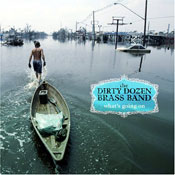 7. Dirty Dozen Brass Band: What’s Going On (Shout! Factory)
7. Dirty Dozen Brass Band: What’s Going On (Shout! Factory)
The Dirty Dozen Brass Band, wanting to make a statement, reached back to the defining political masterpiece of R&B and soul, Marvin Gaye’s What’s Going On, and re-recorded its songs with the help of guests including Chuck D, Bettye LaVette, Ivan Neville, G. Love, and Guru. On one hand, you could say it’s awfully sad that you need to go back 35 years to find an album in the genre that packs this kind of sociopolitical wallop, and that its themes are, if anything, more resonant today than they were in 1971.
On the other hand, this is good music no matter what decade it is, and a great idea, and a powerful statement besides.
8. Bob Schneider: The Californian (Shockorama)
Bob Schneider’s a legend in Austin, but fairly unknown almost everywhere else; The Californian won’t change that, but it probably wasn’t meant to. Too prolific and eclectic for a major (or indie) label to keep up with, Schneider tends to license his albums for distribution, meaning The Californian is not only woollier than your average album, it’ll be tougher to find.
It’s worth the effort, though – even if it’s too messy to be truly great, this record contains some real stunners, particularly the gorgeous, soaring “Flowerparts.” It’s like nothing else on the album, naturally, but you could say the same of any other song. If you’re willing – or eager – to take a series of quick musical turns, you’ll find a lot to love here.
9. Jules Shear: Dreams Don’t Count (Mad Dragon)
Though all Shear’s releases are full of great songs, they often left you wondering who’d sound good covering them, and that isn’t the case here. It’s true that his voice is still probably an acquired taste, and his phrasing on some of these songs can run toward the extremely languid, but those moments are few, and they pass quickly. Besides, it’s more than made up for by the fact that this is a stunning set of songs.
It isn’t party music, to be sure; there’s a mournful wind blowing through the album, one that only comes close to calming in the good-natured resignation of “Do What They Want” – but it’s a mournfulness borne of honest self-reflection, not self-pity, and that makes all the difference.
10. Shawn Colvin: These Four Walls (Nonesuch)
If These Four Walls doesn’t represent a substantial departure for Colvin, it easily stands alongside her best work. In fact, as a synthesis of folk and pop, of shadows and light, of beginnings and endings, Walls really might be, if not her best album, then her best since Steady On.
Sonically, it’s a culmination of everything Colvin and producer John Leventhal have ever done; lyrically, it’s among the most smartly emotional music you’ll hear this year; and melodically, it’s a satisfying return to indelible form. It’s worth noting that she makes Westerberg’s “Even Here We Are” her own and renders the Bee Gees classic “Words” a beautiful afterthought.



